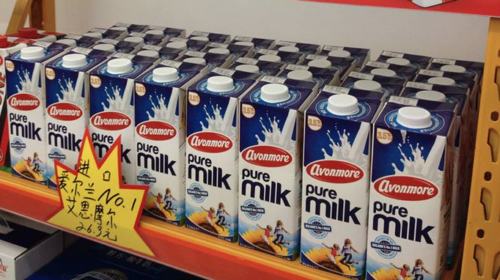CRI Report has released a report titled “UHT Milk Market – Analysis of Market Size, Share & Trends for 2019 – 2020 and Forecasts to 2030” which is anticipated to reach USD 101.8 billion by 2030. According to a study by CRI Report, the market is anticipated to portray a CAGR of 7% between 2020 and 2030. According to the report, the main driving force behind the growth is an increase in the number of product innovations such as the addition of organic and flavored content by market players. The longer shelf life in UHT milk for learners living in hostels is an excellent factor for increasing usage because less cooling is required. UHT milk can be kept at room temperature and so in developed countries, most local restaurants and food supply chains use it without investing in cooling equipment. This is ideal in some African and Asian countries where energy is a big problem and the lack of a cooling system kills daily milk.

The market report on global UHT Milk market includes in-depth insights as:
- The estimated value of the market was USD 60.2 billion in the year 2020.
- Region-wise, the market in Europe, which held the largest market share of XX.X% in the year 2020, emerged as a key market for UHT Milk Market.
- Based on product, unflavored emerged as a key segment in the global UHT Milk Market.
- Based on fat content, skimmed emerged as a key segment in the global UHT Milk Market
- Key players are likely to focus on product innovations and expansion through mergers to retain their positions in developed markets.
“The main driving force behind the growth is the need for this UHT milk can usually be seen in young people and for business purposes. The longer shelf life in UHT milk for learners living in hostels is an excellent factor for increasing usage because less cooling is required. UHT milk can be kept at room temperature and so in developed countries, most local restaurants and food supply chains use it without investing in cooling equipment. This is ideal in some African and Asian countries where energy is a big problem and the lack of a cooling system kills daily milk. The commodity has a high price than usual pasteurized milk, which increases the income.”, said a lead analyst at CRI Report.
UHT Milk (ultra-high temperature) is processed and sterilized through the process of UHT pasteurization for the removal of milk microbes while maintaining the necessary nutrients. This normally includes heating the milk for 1 or 2 seconds to a temperature above 135°C that contributes to raising the milk’s shelf-life without having to add preservatives. Pasteurized milk is further packaged to avoid the development of noxious microorganisms in aseptic containers. It can be safely processed and can be eaten directly without boiling at room temperature with minimal cooling requirements.
Global UHT Milk market is segmented by product into Flavored, Unflavored. The market is dominated by unflavored UHT milk. These goods are products that are used every day and thus have a strong customer base. In addition, the segment demand is anticipated to accelerate the shelf lives of unflavored UHT milk over the predictive timeframe as it makes use of homemade drinks. The substance is also used for main homemade goods as a raw material.
Key Players in the Market
- Some of the key players operating in the global UHT Milk market are Amcor Ltd.; Albea Group; First milk; Ardagh Group; Bemis Company, Inc.; Mondi plc; Koa Glass Co. Ltd.; Bormioli Rocco Spa; Saint-Gobain; MeadWestvaco Corp.; Sonoco Products Company; A2 Corporation; and Mother dairy, Other Prominent Players
Get Valuable Insights into Global UHT Milk Market
In the new report, CRI Report thrives to present an unbiased analysis of the global UHT Milk market that covers the historical demand data as well as the forecast figures for the period, i.e., 2021-2030. The study includes compelling insights into growth that is witnessed in the market. The market is segmented by fat content into the whole, semi-skimmed, and skimmed; by-product into Flavored, Unflavored. Geographically, the market is segmented into North America, Latin America, Europe, Asia Pacific, and Middle East, and Africa.
